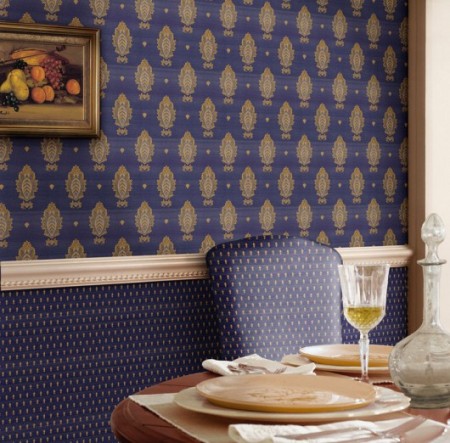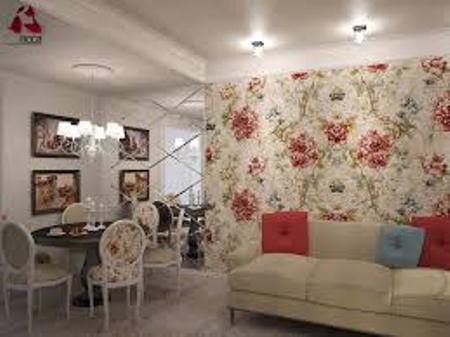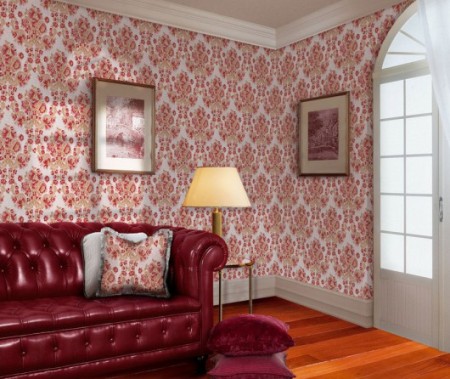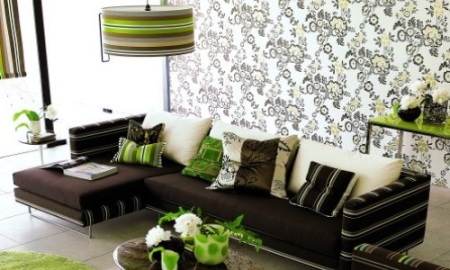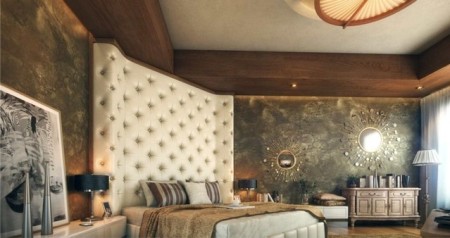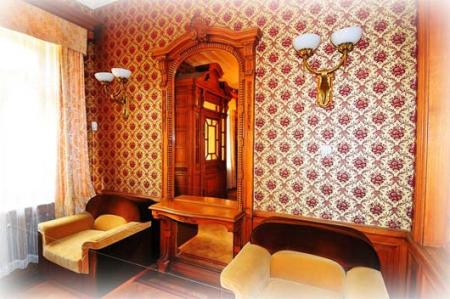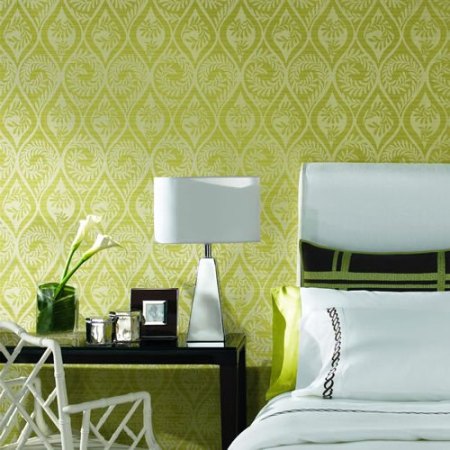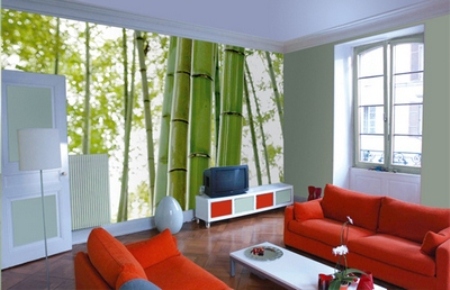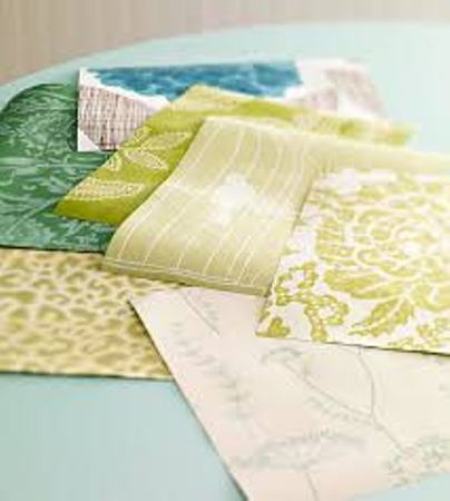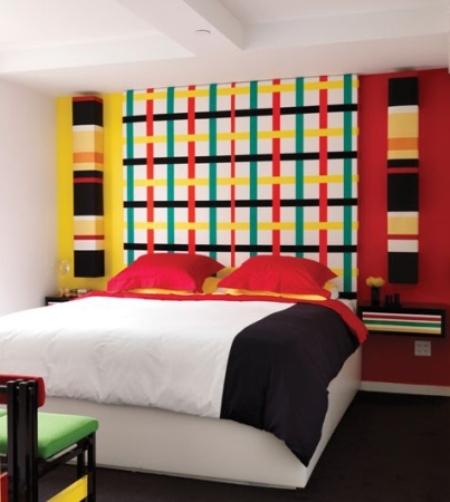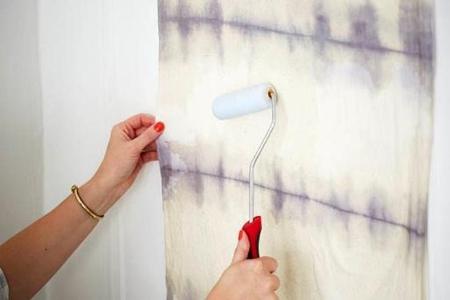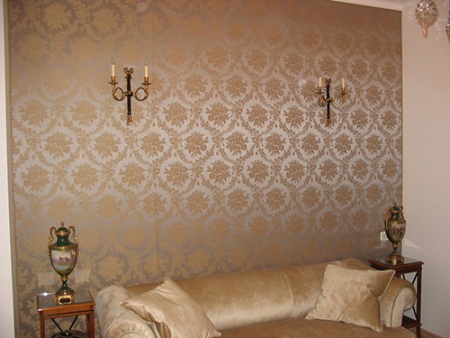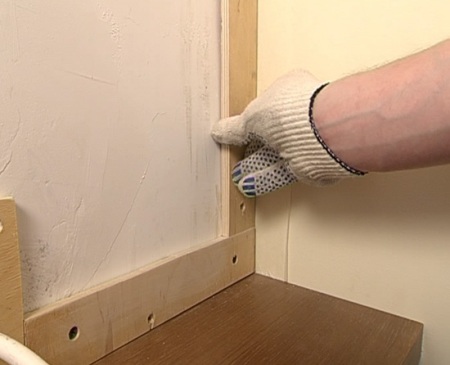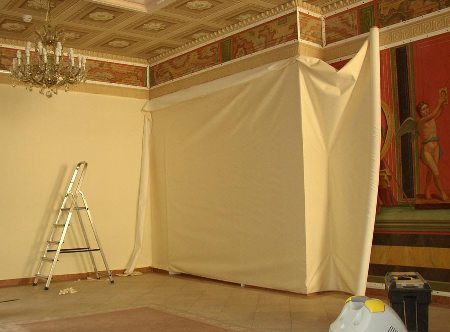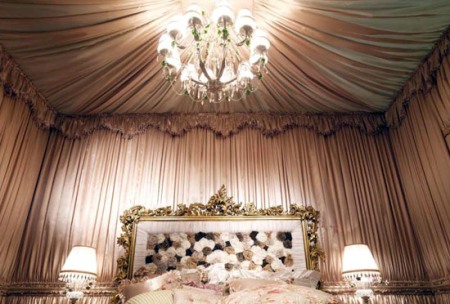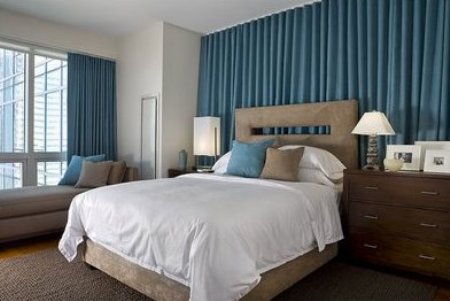To date, the repair of the walls of the room is reduced to a wallpaper sticker, a coating with decorative plaster or painting. At our ancestors, several centuries ago, it was customary to beat the walls with cloth. True, many could not afford such repairs. Basically, this interior decoration was available to noble masters. Quite often, similar decoration of the walls was done in the royal chambers and other palace rooms. The presence of this kind of decor demonstrated prosperity and allocated high position in the society.
Content
What are the types of decoration of walls with cloth
Modern decoration with fabric walls is on a new round of popularity. Today, cloth drape can be performed both in classical style and used in modern interior decoration.
There is a large and varied number of techniques for draping walls with cloth. This factor makes it possible to make a unique and impressive decor of almost any room. An exception, in this case, is the bathroom and kitchen. In these rooms to use the cloth, the wallpaper site is not desirable. In certain cases, one of the kitchen walls can be covered with a cloth (the one that will be located opposite the kitchen set). With regards to the bathroom - there are no compromises. A high constant percentage of humidity in the bathroom is unable to withstand any of the known types of modern upholstery.
Wall-papers from a fabric for walls
The decision to make the interior of one of the rooms in the form of complete fabric drapery is very risky, although the result can exceed all expectations and prove to be quite spectacular. In order to avoid pretentiousness and lasciviousness, it is necessary with special care and scrupulousness to approach the choice of fabric material and the general color solution of the entire room. For example, a bedroom with enough light, not a small area, with the basic color scheme of milk-beige, can be enriched with a structured dense tissue. Tighten it should be so that visually created the effect of three-dimensional panels. In this variant of the interior, the bed head should also be covered with a structured fabric, and the rest of the decor elements should be minimized.
Selecting fabrics for the bedroom interior executed in a rustic style, you can choose your choice in black and white colors with a contrast pattern. The label of the fabric material is produced in the same way as conventional paper wallpaper. The most suitable fabric for such work is silk and cotton. Specially designed for wall decor the fabric is very thin, but has a dense structure.
With fabric walls, skirting is usually made high. This helps protect the material from possible damage and contamination. Experts advise, in the bedroom made by this option, not to use bright accessories that could attract extra attention.
In order to combine classical and modern style and at the same time get a very successful mix, all the walls can be covered with cloth in the dining room. For this room, the most suitable option is a coach coupler. This name was given to the fabric due to the fact that it was often used for interior decoration of carriages.
Here, the most successful option - the separation of walls into visual compartments. A special chandelier of unusual shape with extended crystal pendants will add special style to the interior. The interior created by this style will turn out to be very cozy, which is of no small importance for a room like a dining room.
One of the most rational rooms for obbivki fabric wall is a home cinema. Such a room should be equipped with the maximum degree of noise insulation. If the walls in this room are covered with a dense cloth or skin, then the quality of acoustics will improve significantly, and the sound from the cinema hall will not be heard in the neighboring rooms. In addition to the fact that such an accomplishment will make the interior cozy, the design of the room will be made in a classical style with air layers of antiquity.
Finishing walls with a cloth - choose the best option
Unconventional design and high enough cost of fabric decoration, often leads to the fact that the fabric is made of cloth only on one of the walls of the room or form only a niche. For example, in the bedroom you can only beat the area where the bed is located. The area at the head of the bed can be highlighted with a darker shade of fabric, in order to get a contrast in relation to other interior details. Finishing the same shade can be used for draping the bedside pouffe. This "roll call" will be interesting to look in the overall design of the bedroom.
One of the walls in the dining room can be decorated with a geometric screed. For this, the wall located opposite the dining table will be most suitable. The color of the fabric is better to choose one that will go well with the color scheme of other walls or furniture colors. On the wall you can hang a suitable size mirror. It will visually increase the room space.
When creating a bedroom decorated in the royal style, it is better to use a coach coupler with inclusions of gold threads for wall cladding. This combination of decoration of walls and furniture from a naturally carved tree decorated with gilded fragments, will give an ideal and at the same time an extraordinary, rich look. For such a bedroom will suit velvet, red, blue and green colors. Similar combinations are used to create a classic style, country or provence. Also, when decorating such rich bedrooms, you can use silk or the thinnest cotton, discreet shades, with various impregnations or elements.
Wall Cloth
Pretty interesting looks on the walls and a fabric with a floral print. Besides this, the fabric, for example, with the image of a geographical map or pages from foreign newspapers, will look rather unusual. Fabric finishing is a versatile, versatile technique, which is acceptable when creating any of the known types of interior.
Tissue wall padding is a very laborious process, but the result, as a rule, exceeds all expectations. It is for this reason that modern designers often resort to this decoration technique so often, embodying unusual and at the same time impressive ideas.
Select fabrics for wall finishing should be tight and elastic, it can be:
- tapestries,
- silks,
- chintz,
- upholstery furniture fabric will be practical.
Upholstery fabric is recommended to be treated with special compounds that protect it from penetration of moisture.
For gluing it is recommended to use velor, velvet or suede fabrics, for stretching - a mixture of cotton with viscose, for draping - thin, dense light types of synthetic and natural silk.
Wall decoration with fabrics
Immediately it is worth noting the positive moments in the decoration of walls or part of the walls with a cloth:
- unordinary, noble appearance
- the opportunity to decorate with the same fabric and other textile decor elements.
pasting
Sealing the fabric of walls is a troublesome business, so it requires certain skills. In order to do this yourself, you will need patience and learning a certain literature or browsing the relevant sites with recommendations and instructions on the Internet.
First of all, you should conduct the preparation of the surface to be pasted: peel, plaster and apply a primer. The wall should be perfectly smooth and dry well after the primer.
In addition to this, the preparation requires cloth. First cut a small piece of tissue and measure it. Then the cut is soaked and dried. Again produce a measurement. if, after repeated measurement, shrinkage of the material is found, it is worth wetting and drying all the material planned for use. After washing, the material must be ironed well. If the shrinkage did not occur or was insignificant, you can not do the laundry, just ironing will be enough.
The fabric is best taken with the maximum width - this will help to avoid a large number of stitches. To cut it you need strips, the length of which will be equal to the height of the wall, the main thing - do not forget to add a couple of centimeters for the stock.
After this, you can sew stitches along the width. It should turn out a large canvas, the yardage of which will coincide with the long wall plus about 20 cm of stock.
Experts advise: for each of the walls prepared for the padding to sew individual canvases. In principle, the entire room can be pasted together in one sheet, but this will require more people, patience and a certain skill. Sewing the necessary number of strips, the fabric needs to be ironed again. Special attention to this ironing should be given to the stitched seams, so make them as smooth as possible. Now the canvas is rolled into a roll along the height of the wall.
Directly for gluing a minimum of two people. Usually, the application of glue occurs only along the edges of the fabric, while the fabric must be stretched. The adhesive strip should be about 10 cm along the entire height of the wall. Slightly unwound the fabric, you can start uniform gluing.
One person will have to hold a roll with the remaining fabric, and another to engage pressing the fabric against the wall with grease glued using an ordinary roller. A similar process, with each of the canvases, should be done on each of the four sides.
In cases where the fabric is heavy, it makes sense to provide additional reinforcement with wooden rails. Reiki attach the fabric to the glued surface in places where the glue is applied. Additional reinforcement is used temporarily, the slats are not removed until the glue is completely dry. Reiki attach to the wall with nails, not completely driving them.
Experts advise first of all to glue the left side of the wall, then the top and only after these edges finally dry to proceed to pasting the right edge and the bottom. Another sequence of pasting, also quite often used by specialists: top, left, dry, right and bottom.
If rails were used, their elimination should be done very carefully with the help of pliers and so that the fabric remains unformed. Remaining on the wall surplus fabrics neatly cut, and the edges are covered with a plinth of plastic or wooden slats - it all depends on the planned style and interior of the room being repaired.
upholstery
This variant of decorating is carried out according to the principle of installing stretch ceilings. It will be difficult to do such work on your own, but you can order it in many workshops. They also offer installation kits. They consist of guides, into which a canvas is inserted.
A wide range of materials are used for the production of guides:
- wood,
- plastic,
- metal,
- rubber.
There you can buy a substrate that will make the wall soft and warm, soundproof and seamless.
After acquiring ancillary components, you can try to work on the tightening of the walls yourself. If the decision is made to do everything yourself, the work will be to make a frame and glue the fabric to it, if desired, you can nail it. Of course, it's easier to use the finished system, you just need to fill the cloth in the gap between the slats and fix it with a clip.
To change the option of finishing the walls during repair, you only need to replace the fabric with a new one, the frame can be used many times.
drapery
This method is quite simple, it will require fastening a wide cloth on a thin string, decorated with a decorative strip. It is nailed to the very ceiling. Drape the fabric with waves.
Another variant of draping walls with cloth involves fixing draped tissues along each edge of the wall. As fasteners use plastic, wooden, metal guides. The fastening is carried out after folding and fixing the folds on the canvas. An important point is the calculation of the width of the canvas - it should be enough for a beautiful laying drapery.
Most often, drapery is used in bedrooms and living rooms, especially if the interior wants to make oriental notes.



